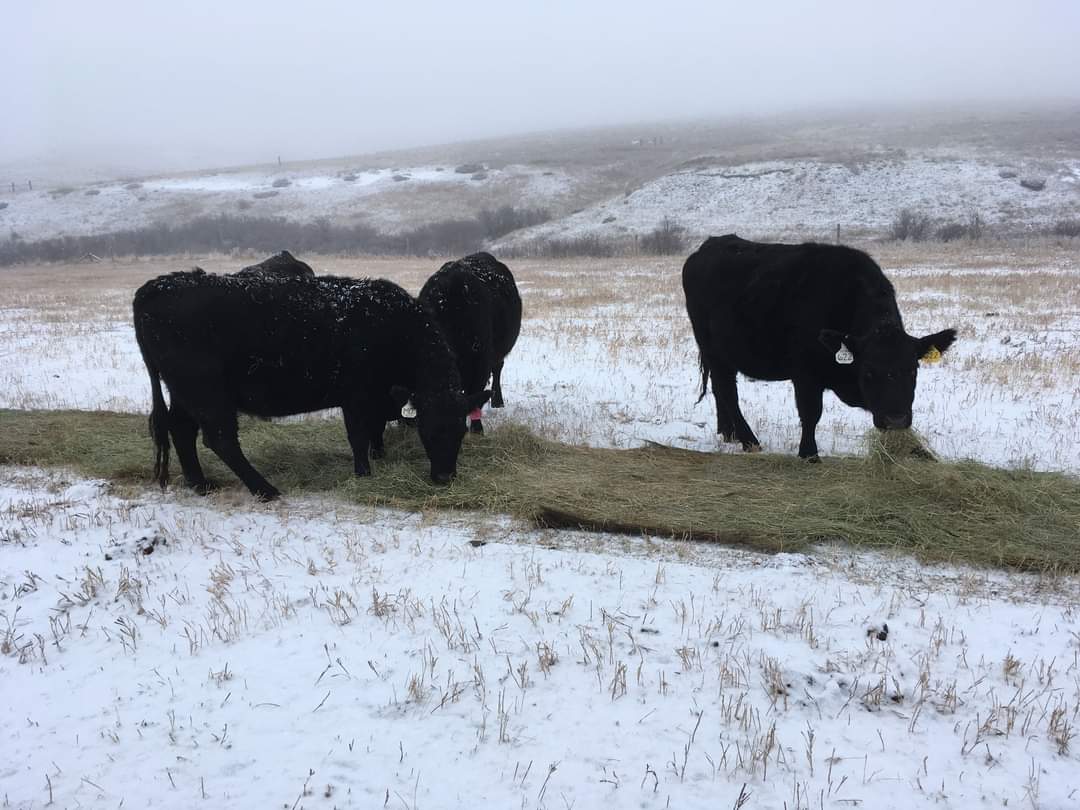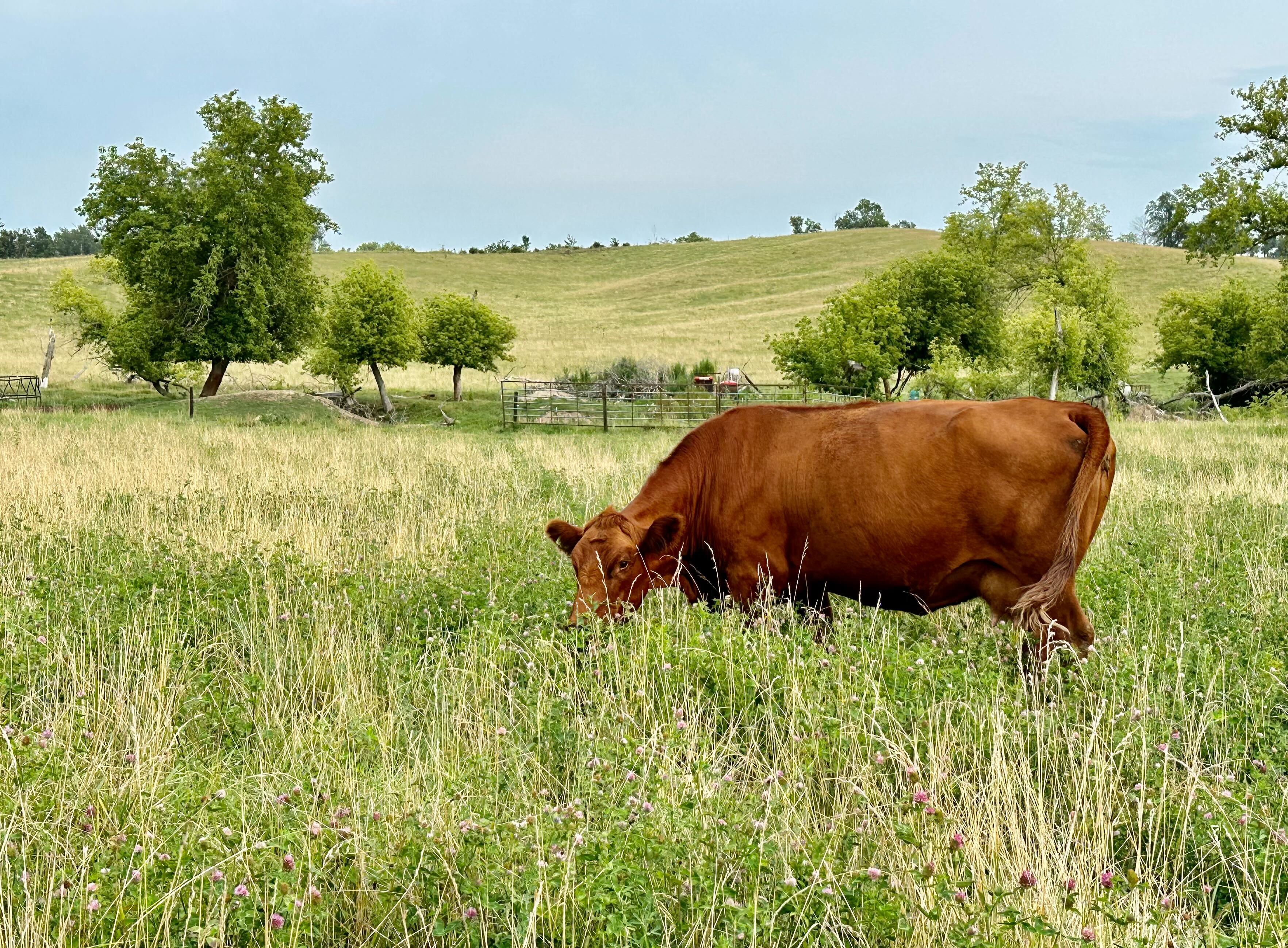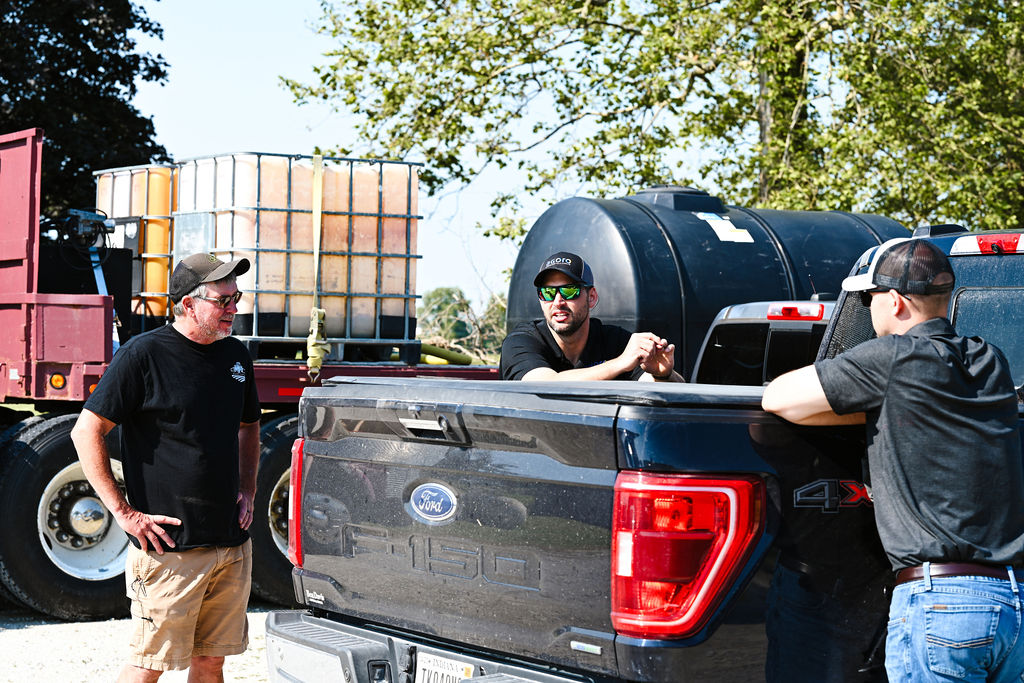Grasslands & Carbon Storage
Road trips are honestly the best way to spend the spring, summer, or fall. The winter time brings some challenges to travel when living West of the Missouri River. However, when windshield time is available, one is often brought up short with the idea that many miles spent on the road run parallel to the vast grasslands of the wonderful United States. 655 million acres of the US are considered grasslands. The formal definition of grassland is a vast area covered predominantly by grasses and other desirable vegetation suitable for grazing by domestic and wild animals. This includes range and pasture, both annual and perennial in nature.
Grassland can be found on six of Earth’s seven continents and makes up 20-40 percent of the world’s land cover, depending on the definition. The large vegetative landscapes support many flora and fauna: mammals, reptiles, fowl, insects, microbes, wildflowers, trees, shrubs and grasses. When combined these factors make grasslands a good candidate to play a very important role in the mitigation of atmospheric warming by storing carbon in the soil. Carbon storage in soil begins with the process of plant photosynthesis, which converts atmospheric carbon dioxide (CO2) into above-ground biomass and carbon-based compounds exuded through the roots. These materials are converted into soil organic matter through processes mediated by soil microbes.
Carbon storage on grasslands requires a simple yet important recipe: Water, sunlight, microbial processing and something to remove the forage, like GRAZERS! Grazers have always been present on the landscape in North America. Historically speaking, American Bison grazed the plains in a multi-year rotational pattern, returning on average every seven years to the same grazing area (“the original rotational grazing managers, if you will”). This allowed for individual grazing areas to rest and time for the grass to grow and old roots time to decompose. When this happens, as was already mentioned, microbes process these organic residues and process them into soil organic matter in the rhizosphere and throughout the soil profile. This soil organic matter contains nutrients like soil carbon, nitrogen, phosphorus, and other micronutrients that can not only provide climate change mitigation but also provide plant nutrients for the future.
Grasslands’ Power To Hold Carbon
Grasslands are an incredible terrestrial landscape we can view as we drive across the US. However, it is truly the belowground dynamics in the grassland that have the ability to help mitigate our atmospheric gas issue. Furthermore, it is the way we manage those grasslands that can promote greater sequestration and agricultural productivity. This lies in the hands of ranchers across the US.
Through improved management practices like rotational grazing, introducing biodiversity, and nitrogen applications our grasslands can be more productive, resilient to climate extremes and store carbon.
By implementing these management practices, the 655 million acres of grasslands in the US have the potential to store around 1 billion metric tons of carbon dioxide each year! "
This is a natural process but can be enhanced through grazing management practices like changing herd sizes, sub-sectioning pastures to create rotation paddocks, increasing rest days to allow for regrowth, and reversing rotation patterns. By increasing ground cover by planting forage species, productivity increases in the grasslands resulting in greater carbon storage.
Grasslands, unless managed for hay, are often not fertilized other than the manure deposited by animals when grazing. These grasslands are often limited in nitrogen, which leads to limited productivity and the ability to store soil organic matter because carbon processing cannot happen without nitrogen.
The management practices mentioned above: improved grazing management, biodiversity and nitrogen use are practices that benefit ranching in the US. Improved grazing can alter the bottom line, positively by improving animal health, suppressing weeds, utilizing forage better and improving total forage production. Introducing a new forage species through biodiversity also increases productivity upon establishment. This helps to support more animals and can cause the belowground microbes to be more active because of alternative energy sources. Ranchers often desire more forage production or to reduce bare ground in pastures. By decreasing bare ground and increasing productivity, carbon storage is maximized in the rhizosphere. Lastly, the addition of minimal amounts of nitrogen through chemical fertilizer means or organic amendments such as manure or compost tea, prime the soil profile to facilitate growth of plants and microbes. By activating both walks of life, nutrient cycling is enhanced providing needed inputs to carbon storage. However, the addition of nitrogen to a system that contains annual weeds is not advised until weeds are removed to reduce composition with nuisance species.
Why Are Grasslands So Important?
But what makes these miles of grasslands that we drive-by prime landscapes to store carbon? These landscapes are ideal for carbon storage because they support many types of animals and plants. When biodiversity is high, this is linked to increased soil carbon storage because the ecosystem has many sources of carbon inputs that can be processed and stored as organic matter. Second, it is the plant biodiversity that has various rooting depths belowground. This causes root exudates to be shuttled to the rhizosphere at many different locations in the soil profile. This allows for deep to shallow carbon storage. These systems have also evolved to fire, drought and grazing cycles. It is the stored organic matter, coupled with deep rooting systems, that allows for this resilience. Post fire, drought or heavy grazing event, there is enough nutrients stored below ground in grasslands that when water and heat are present, plants can regrow.
Grasslands, despite being the border to every highway or backroad, are possibly the key to mitigating atmospheric warming gasses. This can be done by enhancing plant productivity through improved grazing, increasing biodiversity and nitrogen use. Ranchers are excellent land managers and often control or have the means to manage our US grasslands. Through tweaking their current management practices ranchers could find themselves able to obtain an alternative income stream through carbon sequestration credits. Ranchers can see the benefits of increased plant productivity to their herds and bottomline, while increasing their soil organic carbon, enhancing long-term resilience of their lifestyles. However, with practice change comes hurdles and often a new way of thinking.
Rancher’s Role In Carbon
Many ranchers who are considering enrolling in carbon credit programs such as Agoro Carbon’s often mention the challenges in adopting rotational grazing practices. Moving from a conventional grazing pattern to an improved rotational pattern can require extra time and more importantly, labor to move cattle. Producers also ask about the hurdle of the cost of new fencing or hotwire. The revenue received from carbon credit programs can help offset the cost of these capital expenses. Another question often asked is how committed am I to my grazing pattern or plan in a carbon program?
Agoro Carbon’s response is that our carbon credit generation program is meant to be flexible and fit into any operation in the US. If mother nature doesn’t provide water via late spring snows or rainfall, ranchers might have to alter the herd size, not graze, etc. In this case, communication is key to a successful program. Lastly, ranchers often wonder when first establishing improved grazing methods, a depression in forage can occur, but studies show this is overcome in time. Also our grower success team is always available to advise and guide them through this transition phase to help minimize any negative effects.
What Species Can Be Planted?
Producers also often ask about what species can be planted because of cost and other contracts they might have been involved in with more stringent requirements. In the Agoro Carbon program species depends on producer needs and desires, soil chemical and physical properties, temporal considerations and long-term production goals. There are many options for forage, each of which would be considered a tool in the toolbox to aid in a production goal, driven by the producer.
The use of fertilizer in grazed native pasturelands is often a foreign concept to ranchers and they express their concerns about the hefty price tag of applying synthetic N fertilizer, given recent price hikes. Carbon revenue payments help to offset this cost, and it is also worth mentioning that the Agoro Carbon Program only requires the application of fertilizer only once during the ten-year contract in our program. This allows the rancher flexibility in when to apply the fertilizer, hopefully providing a window when fertilizer costs are at their lowest point during a window of time. Furthermore, the program allows for the application of alternative fertilizers like compost tea, manure, etc. These products can be found on a ranch or produced with minimal cost, time and effort.
It should be noted that the carbon programs present in today’s ag markets are meant to enhance soil health, promote better business practices and foster a lifestyle into the future. The ranching lifestyle is often what is truly dreamt about and glorified while driving down the road. This lifestyle should be preserved, as well as the soil which it relies upon. Carbon programs can help offer supplement income to ranching operations to ensure their longevity for the benefit of both rural economies as well as means for mitigating the effects of climate change.
Want to learn more? Click here: The benefits of rotational grazing (agriculture.com)
Why Are Grasslands So Important?
But what makes these miles of grasslands that we drive-by prime landscapes to store carbon? These landscapes are ideal for carbon storage because they support many types of animals and plants. When biodiversity is high, this is linked to increased soil carbon storage because the ecosystem has many sources of carbon inputs that can be processed and stored as organic matter. Second, it is the plant biodiversity that has various rooting depths belowground. This causes root exudates to be shuttled to the rhizosphere at many different locations in the soil profile. This allows for deep to shallow carbon storage. These systems have also evolved to fire, drought and grazing cycles. It is the stored organic matter, coupled with deep rooting systems, that allows for this resilience. Post fire, drought or heavy grazing event, there is enough nutrients stored below ground in grasslands that when water and heat are present, plants can regrow.
Grasslands, despite being the border to every highway or backroad, are possibly the key to mitigating atmospheric warming gasses. This can be done by enhancing plant productivity through improved grazing, increasing biodiversity and nitrogen use. Ranchers are excellent land managers and often control or have the means to manage our US grasslands. Through tweaking their current management practices ranchers could find themselves able to obtain an alternative income stream through carbon sequestration credits. Ranchers can see the benefits of increased plant productivity to their herds and bottomline, while increasing their soil organic carbon, enhancing long-term resilience of their lifestyles. However, with practice change comes hurdles and often a new way of thinking.
Rancher’s Role In Carbon
Many ranchers who are considering enrolling in carbon credit programs such as Agoro Carbon’s often mention the challenges in adopting rotational grazing practices. Moving from a conventional grazing pattern to an improved rotational pattern can require extra time and more importantly, labor to move cattle. Producers also ask about the hurdle of the cost of new fencing or hotwire. The revenue received from carbon credit programs can help offset the cost of these capital expenses. Another question often asked is how committed am I to my grazing pattern or plan in a carbon program?
Agoro Carbon’s response is that our carbon credit generation program is meant to be flexible and fit into any operation in the US. If mother nature doesn’t provide water via late spring snows or rainfall, ranchers might have to alter the herd size, not graze, etc. In this case, communication is key to a successful program. Lastly, ranchers often wonder when first establishing improved grazing methods, a depression in forage can occur, but studies show this is overcome in time. Also our grower success team is always available to advise and guide them through this transition phase to help minimize any negative effects.
What Species Can Be Planted?
Producers also often ask about what species can be planted because of cost and other contracts they might have been involved in with more stringent requirements. In the Agoro Carbon program species depends on producer needs and desires, soil chemical and physical properties, temporal considerations and long-term production goals. There are many options for forage, each of which would be considered a tool in the toolbox to aid in a production goal, driven by the producer.
The use of fertilizer in grazed native pasturelands is often a foreign concept to ranchers and they express their concerns about the hefty price tag of applying synthetic N fertilizer, given recent price hikes. Carbon revenue payments help to offset this cost, and it is also worth mentioning that the Agoro Carbon Program only requires the application of fertilizer only once during the ten-year contract in our program. This allows the rancher flexibility in when to apply the fertilizer, hopefully providing a window when fertilizer costs are at their lowest point during a window of time. Furthermore, the program allows for the application of alternative fertilizers like compost tea, manure, etc. These products can be found on a ranch or produced with minimal cost, time and effort.
It should be noted that the carbon programs present in today’s ag markets are meant to enhance soil health, promote better business practices and foster a lifestyle into the future. The ranching lifestyle is often what is truly dreamt about and glorified while driving down the road. This lifestyle should be preserved, as well as the soil which it relies upon. Carbon programs can help offer supplement income to ranching operations to ensure their longevity for the benefit of both rural economies as well as means for mitigating the effects of climate change.
Want to learn more? Click here: The benefits of rotational grazing (agriculture.com)



